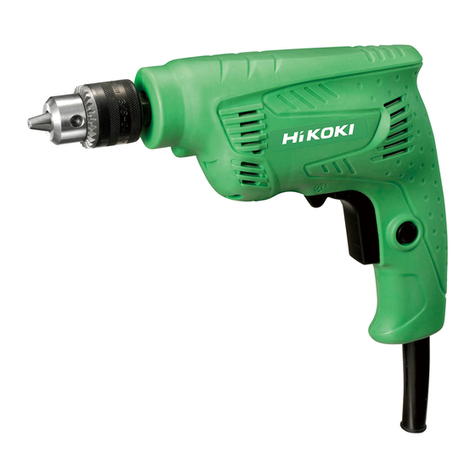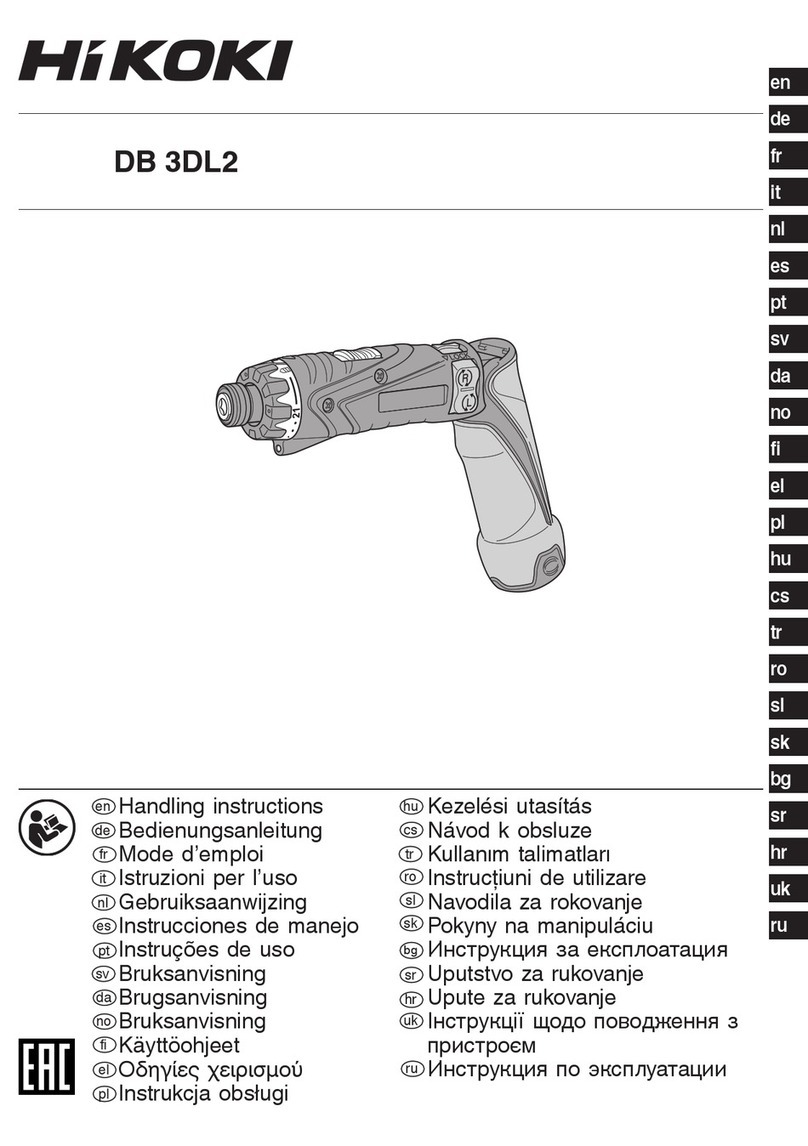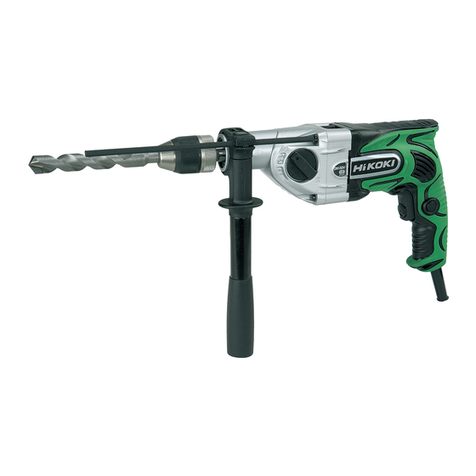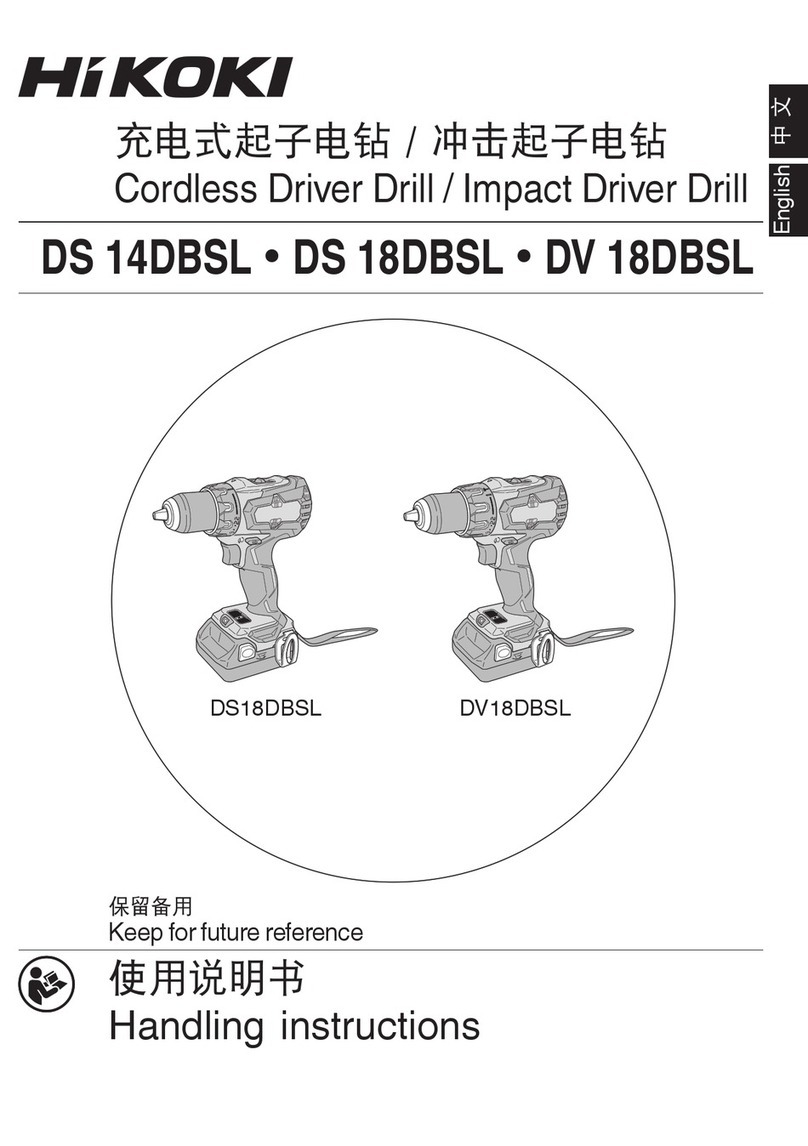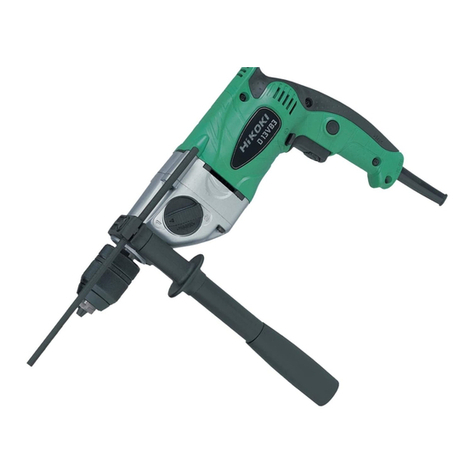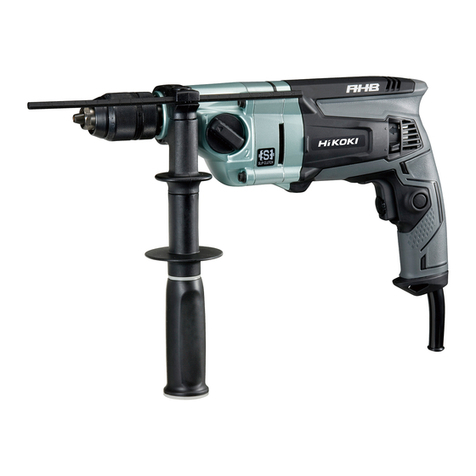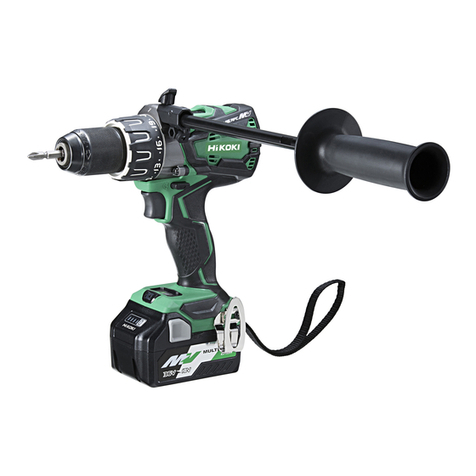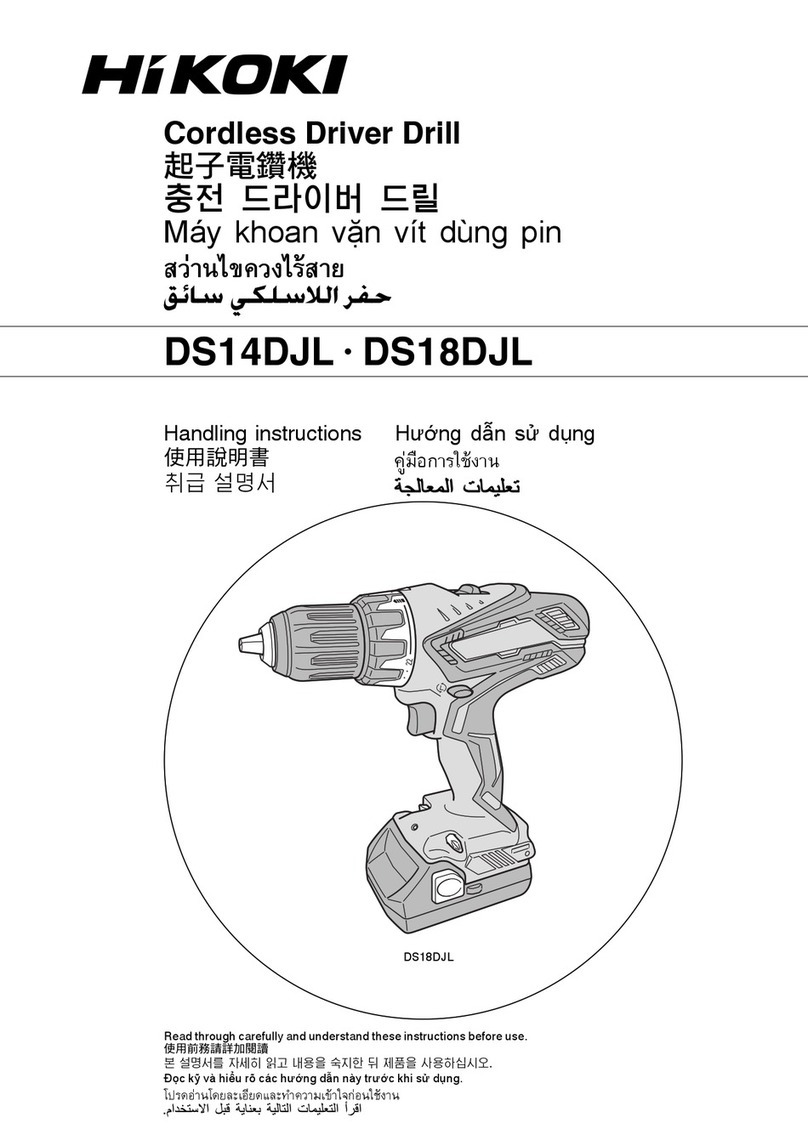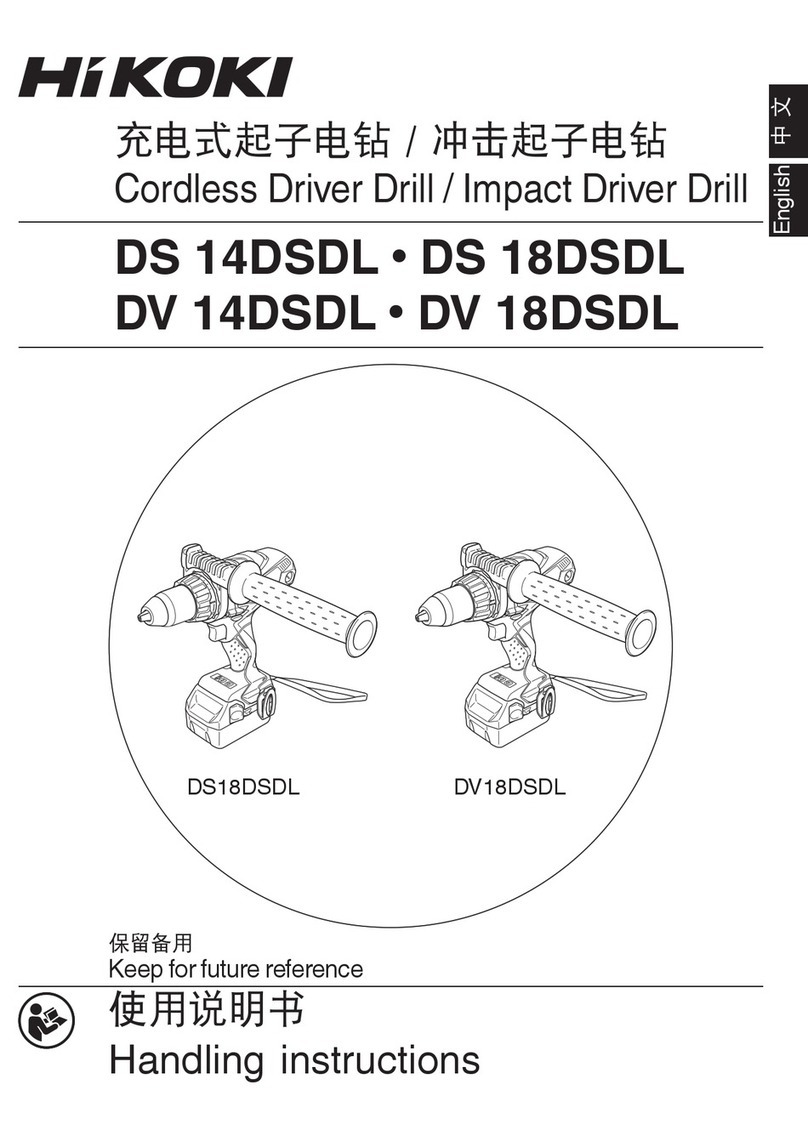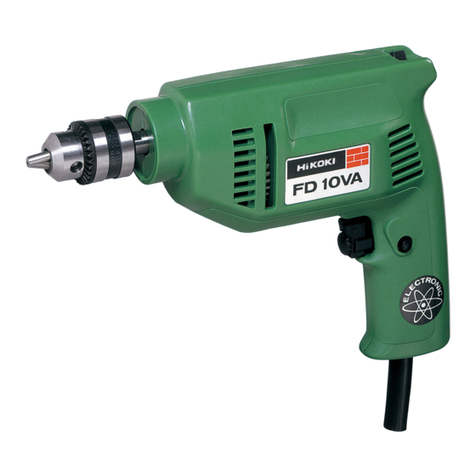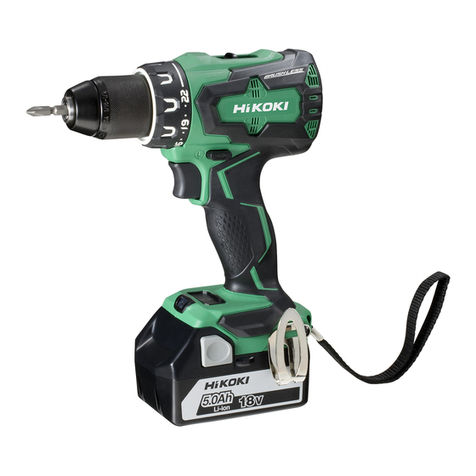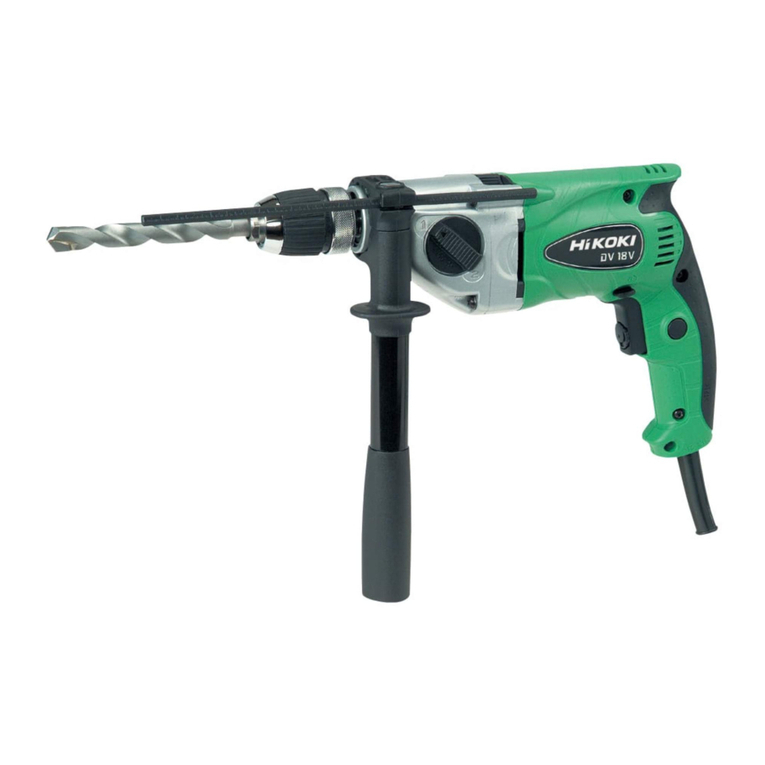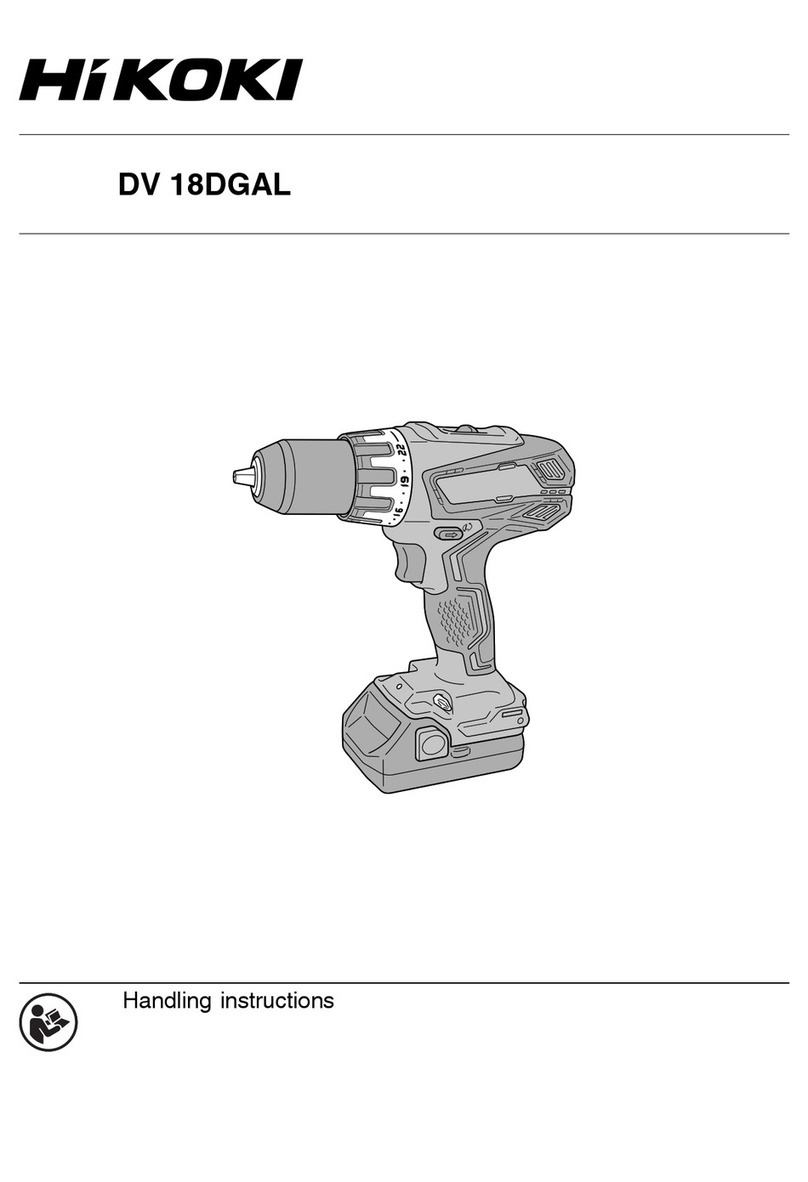
English
7
16. A drill bit can snap off upon penetrating a drilled hole.
When the drill is near penetration, lighten the pressure
on the power tool and continue drilling until penetration
is achieved.
17. When drilling holes with a hole saw, the larger the
diameter is, the larger the reactive force applied to your
arm becomes, to a greater extent than when using an
ordinary iron drill bit.
To prevent loss of control from the reactive force,
ensure that you have firm footing, support the tool firmly
with both hands, and drill holes perpendicular to the
drilled material.
Pressing with excessive force or prying can cause loss
of control from the reactive force, which may result in
injury, and may damage the blade tip of the hole saw.
Additionally, doing so makes the tool more likely to be
stopped by the overload protection.
18. Do not use the protector for hanging the tool.
19. Do not look directly into the light. Such actions could
result in eye injury.
Wipe off any dirt or grime attached to the lens of the
LED light with a soft cloth, being careful not to scratch
the lens.
Scratches on the lens of the LED light can result in
decreased brightness.
20. When working at elevated locations, clear the area of
other people and aware of conditions below you.
21. Always charge the battery at a temperature of 0°C–
40°C. A temperature of less than 0°C will result in over
charging which is dangerous. The battery cannot be
charged at a temperature higher than 40°C. The most
suitable temperature for charging is that of 20°C–25°C.
22. Do not use the charger continuously.
When one charging is completed, leave the charger for
about 15minutes before the next charging of battery.
23. Do not allow foreign matter to enter the hole for
connecting the rechargeable battery.
24. Never disassemble the rechargeable battery and
charger.
25. Never short-circuit the rechargeable battery. Short-
circuiting the battery will cause a great electric current
and overheat. It results in burn or damage to the
battery.
26. Do not dispose of the battery in fire. If the battery is
burnt, it may explode.
27. Bring the battery to the shop from which it was
purchased as soon as the post-charging battery life
becomes too short for practical use. Do not dispose of
the exhausted battery.
28. Do not insert objects into the air ventilation slots of the
charger.
Inserting metal objects or inflammables into the charger
air ventilation slots will result in electrical shock hazard
or a damaged charger.
29. When using this unit continuously, the unit may
overheat, leading to damage in the motor and switch.
Therefore, whenever the housing becomes hot, give the
tool a break for a while.
30. Make sure that the battery is installed firmly. If it is at all
loose it could come off and cause an accident.
31. Do not use the product if the tool or the battery
terminals (battery mount) are deformed.
Installing the battery could cause a short circuit that
could result in smoke emission or ignition.
32. Keep the tool’s terminals (battery mount) free of swarf
and dust.
○ Prior to use, make sure that swarf and dust have not
collected in the area of the terminals.
○ During use, try to avoid swarf or dust on the tool from
falling on the battery.
○ When suspending operation or after use, do not leave
the tool in an area where it may be exposed to falling
swarf or dust.
Doing so could cause a short circuit that could result in
smoke emission or ignition.
33. Always use the tool and battery at temperatures
between -5°C and 40°C.
CAUTION ON LITHIUM-ION BATTERY
To extend the lifetime, the lithium-ion battery equips with
the protection function to stop the output.
In the cases of 1 to 3 described below, when using this
product, even if you are pulling the switch, the motor may
stop. This is not the trouble but the result of protection
function.
1. When the battery power remaining runs out, the motor
stops.
In such a case, charge it up immediately.
2. If the tool is overloaded, the motor may stop. In this
case, release the switch of tool and eliminate causes of
overloading. After that, you can use it again.
3. If the battery is overheated under overload work, the
battery power may stop.
In this case, stop using the battery and let the battery
cool. After that, you can use it again.
Furthermore, please heed the following warning and
caution.
WARNING
In order to prevent any battery leakage, heat generation,
smoke emission, explosion and ignition beforehand, please
be sure to heed the following precautions.
1. Make sure that swarf and dust do not collect on the
battery.
○ During work make sure that swarf and dust do not fall
on the battery.
○ Make sure that any swarf and dust falling on the power
tool during work do not collect on the battery.
○ Do not store an unused battery in a location exposed to
swarf and dust.
○ Before storing a battery, remove any swarf and dust
that may adhere to it and do not store it together with
metal parts (screws, nails, etc.).
2. Do not pierce battery with a sharp object such as a nail,
strike with a hammer, step on, throw or subject the
battery to severe physical shock.
3. Do not use an apparently damaged or deformed
battery.
4. Do not use the battery for a purpose other than those
specified.
5. If the battery charging fails to complete even when a
specified recharging time has elapsed, immediately
stop further recharging.
6. Do not put or subject the battery to high temperatures or
high pressure such as into a microwave oven, dryer, or
high pressure container.
7. Keep away from fire immediately when leakage or foul
odor are detected.
8. Do not use in a location where strong static electricity
generates.
9. If there is battery leakage, foul odor, heat generated,
discolored or deformed, or in any way appears
abnormal during use, recharging or storage,
immediately remove it from the equipment or battery
charger, and stop use.
10. Do not immerse the battery or allow any fluids to flow
inside. Conductive liquid ingress, such as water, can
cause damage resulting in fire or explosion. Store your
battery in a cool, dry place, away from combustible and
flammable items. Corrosive gas atmospheres must be
avoided.
2023/03/17 15:26:17Stylesheet: EU Version: 2023.2.1
D36DYA_C99746771_303_EU
